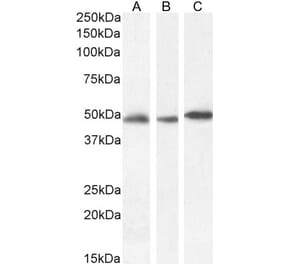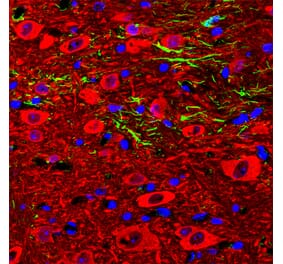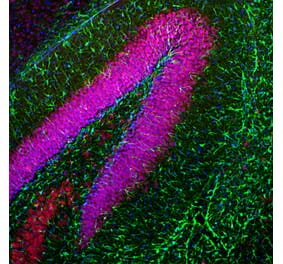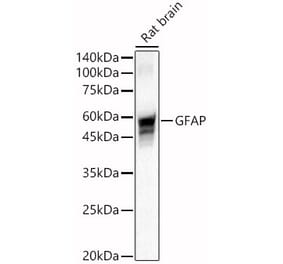+1 (314) 370-6046 or
Contact Us - Argentina
- Australia
- Austria
- Bahrain
- Belgium
- Brazil
- Bulgaria
- Cameroon
- Canada
- Chile
- China
- Colombia
- Croatia
- Cyprus
- Czech Republic
- Denmark
- Ecuador
- Egypt
- Estonia
- Finland
- France
- Germany
- Greece
- Hong Kong
- Hungary
- Iceland
- India
- Indonesia
- Iran
- Ireland
- Israel
- Italy
- Japan
- Kazakhstan
- Kuwait
- Latvia
- Lithuania
- Luxembourg
- Macedonia
- Malaysia
- Malta
- Mexico
- Monaco
- Morocco
- Netherlands
- New Zealand
- Nigeria
- Norway
- Peru
- Philippines
- Poland
- Portugal
- Qatar
- Romania
- Russia
- Saudi Arabia
- Serbia
- Singapore
- Slovakia
- Slovenia
- South Africa
- South Korea
- Spain
- Sri Lanka
- Sweden
- Switzerland
- Taiwan
- Thailand
- Turkey
- Ukraine
- UAE
- United Kingdom
- United States
- Venezuela
- Vietnam

![Immunofluorescence - Anti-GFAP Antibody [3E10] (A270551) - Antibodies.com](https://cdn.antibodies.com/image/catalog/270/A270551_1.jpg?profile=product_top)
![Western Blot - Anti-GFAP Antibody [3E10] (A270551) - Antibodies.com](https://cdn.antibodies.com/image/catalog/270/A270551_2.jpg?profile=product_top)
![Immunofluorescence - Anti-GFAP Antibody [3E10] (A270551) - Antibodies.com](https://cdn.antibodies.com/image/catalog/270/A270551_3.jpg?profile=product_top)
![Immunohistochemistry - Anti-GFAP Antibody [3E10] (A270551) - Antibodies.com](https://cdn.antibodies.com/image/catalog/270/A270551_4.jpg?profile=product_top)
![Immunofluorescence - Anti-GFAP Antibody [3E10] (A270551) - Antibodies.com](https://cdn.antibodies.com/image/catalog/270/A270551_1.jpg?profile=product_top_thumb)
![Western Blot - Anti-GFAP Antibody [3E10] (A270551) - Antibodies.com](https://cdn.antibodies.com/image/catalog/270/A270551_2.jpg?profile=product_top_thumb)
![Immunofluorescence - Anti-GFAP Antibody [3E10] (A270551) - Antibodies.com](https://cdn.antibodies.com/image/catalog/270/A270551_3.jpg?profile=product_top_thumb)
![Immunohistochemistry - Anti-GFAP Antibody [3E10] (A270551) - Antibodies.com](https://cdn.antibodies.com/image/catalog/270/A270551_4.jpg?profile=product_top_thumb)
![Immunofluorescence - Anti-GFAP Antibody [3E10] (A270551) - Antibodies.com](https://cdn.antibodies.com/image/catalog/270/A270551_1.jpg?profile=product_image)
![Western Blot - Anti-GFAP Antibody [3E10] (A270551) - Antibodies.com](https://cdn.antibodies.com/image/catalog/270/A270551_2.jpg?profile=product_image)
![Immunofluorescence - Anti-GFAP Antibody [3E10] (A270551) - Antibodies.com](https://cdn.antibodies.com/image/catalog/270/A270551_3.jpg?profile=product_image)
![Immunohistochemistry - Anti-GFAP Antibody [3E10] (A270551) - Antibodies.com](https://cdn.antibodies.com/image/catalog/270/A270551_4.jpg?profile=product_image)

![Immunofluorescence - Anti-GFAP Antibody [2A5] (A104314) - Antibodies.com](https://cdn.antibodies.com/image/catalog/104/A104314_1.jpg?profile=product_alternative)


![Western Blot - Anti-GFAP Antibody [ARC0206] (A307282) - Antibodies.com](https://cdn.antibodies.com/image/catalog/307/A307282_1.jpg?profile=product_alternative)
![Immunohistochemistry - Anti-GFAP Antibody [SPM248] (A248706) - Antibodies.com](https://cdn.antibodies.com/image/catalog/248/A248706_1.jpg?profile=product_alternative)
![Immunohistochemistry - Anti-GFAP Antibody [ASTRO/789] - BSA and Azide free (A251890) - Antibodies.com](https://cdn.antibodies.com/image/catalog/251/A251890_1.jpg?profile=product_alternative)

![Immunofluorescence - Anti-GFAP Antibody [5C10] (A85422) - Antibodies.com](https://cdn.antibodies.com/image/catalog/85/A85422_1.jpg?profile=product_alternative)

![Western Blot - Anti-GFAP Antibody [GA-5] - BSA and Azide free (A251887) - Antibodies.com](https://cdn.antibodies.com/image/catalog/251/A251887_1.jpg?profile=product_alternative)
![Immunohistochemistry - Anti-GFAP Antibody [GA-5 + ASTRO/789] (A248708) - Antibodies.com](https://cdn.antibodies.com/image/catalog/248/A248709_1.jpg?profile=product_alternative)
![Western Blot - Anti-GFAP Antibody [GA-5] (A248705) - Antibodies.com](https://cdn.antibodies.com/image/catalog/248/A248705_1.jpg?profile=product_alternative)
![Immunohistochemistry - Anti-GFAP Antibody [SPM248] - BSA and Azide free (A251888) - Antibodies.com](https://cdn.antibodies.com/image/catalog/251/A251888_1.jpg?profile=product_alternative)
![Immunohistochemistry - Anti-GFAP Antibody [SPM507] - BSA and Azide free (A251888) - Antibodies.com](https://cdn.antibodies.com/image/catalog/251/A251889_1.jpg?profile=product_alternative)
![Immunohistochemistry - Anti-GFAP Antibody [GA-5 + ASTRO/789] - BSA and Azide free (A251890) - Antibodies.com](https://cdn.antibodies.com/image/catalog/251/A251891_1.jpg?profile=product_alternative)